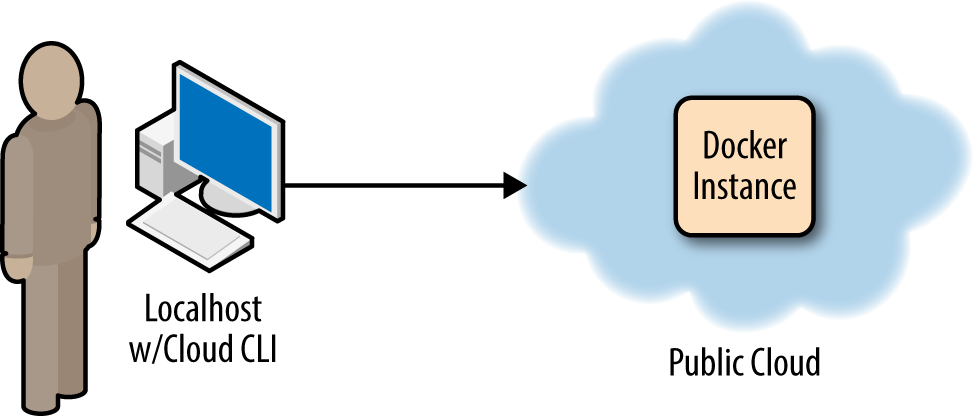Chapter 1. Docker in the Cloud
Introduction
With the advent of public and private clouds, enterprises have moved an increasing number of workloads to the clouds. A significant portion of IT infrastructure is now provisioned on public clouds like Amazon Web Services (AWS), Google Compute Engine (GCE), and Microsoft Azure (Azure). In addition, companies have deployed private clouds to provide a self-service infrastructure for IT needs.
Although Docker, like any software, runs on bare-metal servers, running a Docker host in a public or private cloud (i.e., on virtual machines) and orchestrating containers started on those hosts is going to be a critical part of new IT infrastructure needs. Debating whether running containers on virtual machines makes sense or not is largely out of scope for this mini-book. Figure 1-1 depicts a simple setup where you are accessing a remote Docker host in the cloud using your local Docker client. This is made possible by the remote Docker Engine API which can be setup with TLS authentication. We will see how this scenario is fully automated with the use of docker-machine.

Figure 1-1. Docker in the cloud
In this book we show you how to use public clouds to create Docker hosts, and we also introduce some container-based services that have reached general availability recently: the AWS container service and the Google container engine. Both services ...
Get Docker in the Cloud now with the O’Reilly learning platform.
O’Reilly members experience books, live events, courses curated by job role, and more from O’Reilly and nearly 200 top publishers.

